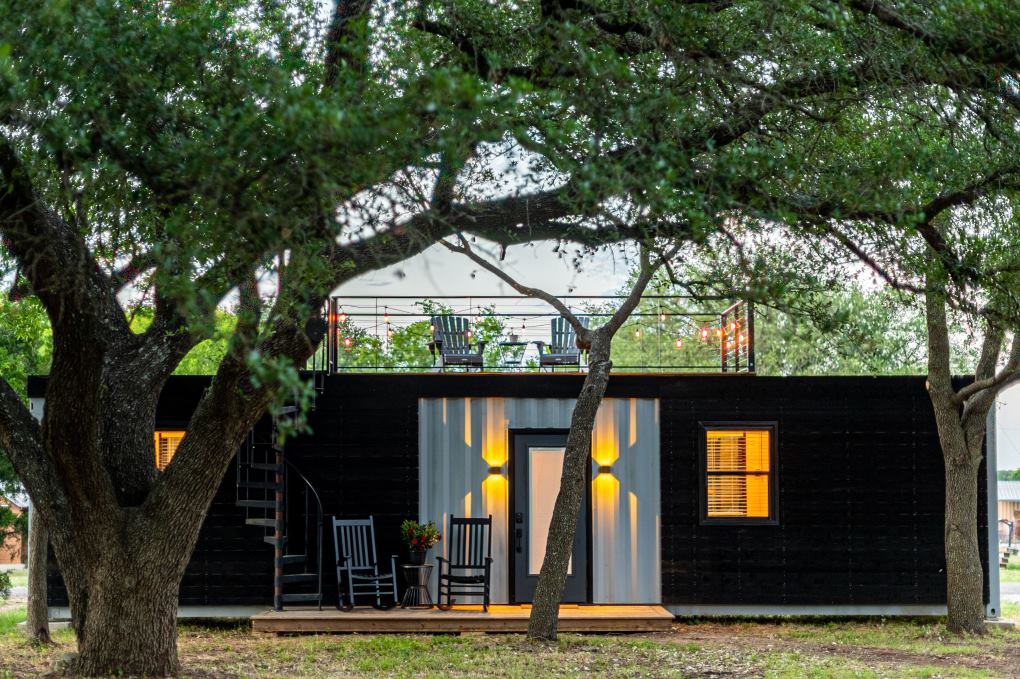An off-grid home is a type of building that is not connected to the public utilities' infrastructure, such as the electrical grid, water supply, or sewer system. Instead, an off-grid home generates its own power, collects and treats its own water, and manages its own waste. That being said, an off-grid effort may be more or less self-sufficient in terms of how far along the construction methods are taking.

Off-grid homes can use a variety of renewable energy sources such as solar panels, wind turbines, hydroelectric systems, or biomass generators to generate electricity. They may also use rainwater harvesting, wells, or other methods to collect water and utilize composting toilets or other waste management systems to manage their waste.
Living in an off-grid house can be achieved in two ways. The first is to construct one from scratch, while the second, even more appealing for some, is to transform your existing home into a self-sufficient oasis. Though it may not be feasible for everyone due to financial constraints, you can take things one step at a time.
Here are some examples of off-the-grid or off-grid homes:

At first, it may look like an unsurmountable task, but here are some practical ideas that can help you to begin with:
Off-grid homes can use a variety of renewable energy sources such as solar panels, wind turbines, hydroelectric systems, or biomass generators to generate electricity. They may also use rainwater harvesting, wells, or other methods to collect water and utilize composting toilets or other waste management systems to manage their waste.
Living in an off-grid house can be achieved in two ways. The first is to construct one from scratch, while the second, even more appealing for some, is to transform your existing home into a self-sufficient oasis. Though it may not be feasible for everyone due to financial constraints, you can take things one step at a time.
Here are some examples of off-the-grid or off-grid homes:
- Restore or create a new space with conventional materials and techniques but keeping it green-oriented _- restore an old farmhouse, buy prefabricated structures, opt for tiny modular homes, update motor homes, etc.
- Restore or build from the ground up (or down, as the case may be) with traditional, ancestral eco-friendly, not mainstream techniques or materials, or with new sustainable, innovative and ecological materials and techniques - the restoration of old buildings (with hemp and white clay lego-like pieces for walls), taking advantage o natural formations i.e. going underground for maximization of temperature control, building Earthships (by using 80% plus discarded materials, recyclables and natural elements like discarded glass bottles, old tires or clay for building proposes).
At first, it may look like an unsurmountable task, but here are some practical ideas that can help you to begin with:
- The first step to creating an off-grid home is to generate your own power, which can be accomplished through solar or wind energy, or a combination of both. While it can be a significant expense at first, it is a long-term investment that will result in substantial savings.
- To further boost self-sufficiency, your home should have its own water source. This can be achieved by collecting and filtering rainwater and increasing your success in this area by planning ahead and buying a lot with a natural spring of water.
- Managing your waste is also possible, starting with reducing it as much as possible and then composting, which can even be an automatized process these days.
- In addition to energy and water self-sufficiency, food production can also be integrated into your off-grid lifestyle. This can include a small greenhouse, vegetable garden, vertical garden, or even a chicken coop, depending on the amount of space available. Organic farming, crop Rotation and polyculture, tillage Management and agroforestry can be part of the experience as well.
But why are these endeavors so appealing to Expats?
More so, why is it that so many Expats are looking to settle down on certain parts of the Iberian Peninsula in these off-grid homesteads?
Off-grid homes are often located in rural or remote areas that are very much appealing to Expats seeking a tranquil, isolated rural experience. What was a slow-build trend spreading throughout decades, was given a skyrocket push during and after the last pandemic. Going off the grid has become the new thing for expats. But building in the middle of nowhere, anywhere, is not practical or cost-effective if you want to connect to public utilities, therefore the need to build off-grid, self-sufficient homes rises.
Off-grid homesteads can also be a choice of lifestyle for people who want to live more sustainably and self-sufficiently, reducing their reliance on outside resources and minimizing their environmental impact for future generations.
And why Portugal and Spain? For many cultural and practical reasons, but mainly because they have plenty of territories that are almost desert in terms of population (as 2022 Portugal range from 23 inhabitants/m2 in Alentejo and Spain 26 inhabitants/m2 in Castilla & leon and Castilla-la mancha), also there are the incredibly appealing nature and landscape expanses that grace the territory and lastly because, financially wise, it is the land of real-state finds and opportunities. Also, for many North Europeans (traditional emigration groups), Spain and Portugal are a comfortable very much well-known land, so it is easy for them to feel at home. It is an easy and appealing choice in the end.
Promote your business in the domestic and international market
UrbaMarkt is an international marketing portal dedicated to bringing national and international buyers together with local professionals, increasing the possibilities of exposing their products and experiences to customers anywhere in the world.|
Marisol Ferreira
|